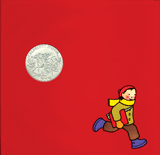thinking like a child
Advice I've heard so far in my planning life is that thinking like a child is usually the way to break through a tough problem - keep asking why? why? why? While I keep this in mind in everyday work and play, I have been turning to children's books to make me a better thinker, and especially a better writer. I love the simplicity, and keeping these examples in mind makes my writing clearer for things as simple as emails, and as complex as 100-slide presentations.
Books by Shel Silverstein and Dr. Seuss, The Red Book (Barbara Lehman), the classics like Alexander and the Terrible, Horrible, No Good, Very Bad Day by Judith Viorst and Ray Cruz and Where the Wild Things Are by Maurice Sendak are so well-written and beautifully brought to life that it's hard not to find inspiration in those few pages.


Imagine my delight in finding The Monster at the End of this Book (Jon Stone & Mike Smollin) online (thanks Very Big Blog).


